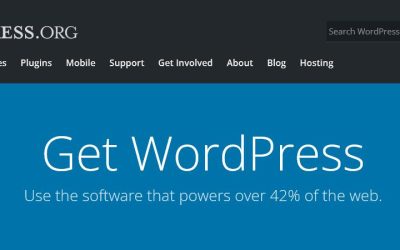Are you planning to launch a new website? If you are feeling stressed out, anxious, nervous, frustrated, and excited, you are on the right track.
In a world that is transitioning to all things digital, websites are an integral part of every business. No matter how building a website might seem, it isn’t as simple as you might think. Despite the plethora of online website creation tools out there, you need to double-check everything from the website design and the web content to the launch day marketing strategy and the maintenance plan. It is a lot and considering that you are launching a website for the first time, you are bound to make mistakes, oversee bugs, skip the testing stage, or forget to set up the redirecting links properly.
So, to help you save time, reduce the risk of errors, and ensure the success of your website, we have created the ultimate website launch checklist. Make sure to cross off every box from the list before you finalize the launch of your website. Follow our guide to check everything from the website design and content to the functionality and promotion plan, then go live.
Pre-Website Launch Checklist
Websites are complex, and so you need to check every element of your website diligently. Let’s start with the three basic components of a website – design, content, and testing.
1. Review the Website Design
No matter how careful you are, the website design is meant to have some inconsistencies and formatting mistakes. Therefore, the first and foremost important part of your website launch checklist is to ensure that the final website design perfectly aligns with the original plan. If neglected, these minimal website design errors can destroy the user experience while portraying your brand as unprofessional.
✔ Compare the Final Website Design with the Approved Design
This is one of the most crucial tasks on your website launch checklist and requires attention to detail. Sit with the designer and thoroughly review each and every component of your website design to ensure that there are no inconsistencies in the fonts, style, header, formatting, content, and layout.
✔ Review the Images and Their License
If you have uploaded stock images on your website, make sure that they are licensed. Otherwise, we recommend using royalty-free images or pictures of your team members, as they give your website credibility and a personal touch. Also, don’t forget to double-check the image size and quality.
✔ Review the Fonts and Other Website Design Elements
Check everything website design related, including the line height, line spacing, font styles, imagery, navigation, leading, and color contrast and consistency. Furthermore, in case you add new content during the development stage, ensure that the content color and style match the theme of your website design.
✔ Check the Mobile Compatibility of the Website Design
Did you know that approximately 59% of global website traffic comes from smartphones? Here are some tips to make your website design mobile-friendly:
- Create a responsive website design:Your site will automatically adjust the design elements and content to fit different orientations and screen sizes.
- Remove all pop-ups: Many pop-ups might clutter the small screen of smartphones, causing hindrance in the user experience.
2. Optimize Web Content
Web content is the soul of your website. It is responsible for navigating users through your website, sharing details about your brand, products, and services, and establishing a strong connection between you and potential customers.
However, to ensure that your website is seen, ranks on the top of the search engine, and the migration is smooth, you need to follow the best SEO (Search Engine Optimization) practices. In this section of the website launch checklist, we will be discussing pointers that can help you in optimizing your site. Keep reading to learn more:
✔ Export High-Ranking Pages
To export high-ranking pages, follow our step-by-step guide:
- Step 01: Sign into Google Analytics, then click on the “Behavior” tab on the left. Now select “Site Content” then “All Pages.”
- Step 02: Adjust the calendar to a long timeframe (2 to 4 years) and click on “Show Rows.”
- Step 03: Select the top-ranking pages and click “Export.”
If you don’t know how to use Google Analytics or find the above-mentioned guide complicated, you can also use SEMrush or other online tools to export a list of your high-traffic website pages.
✔ Find Pages That Have Been Linked to Your Website the Most
Simply log into the Google Search Console, navigate the cursor to the left column, click on “Links” and then “External Links.” Doing so will open a list of links, expand the rows, and export your most linked web content list.
✔ Create a Web Content Strategy Workbook
Combine both lists into a spreadsheet so that you have a document with all of your highest-ranking web content in one place. Create different columns to include the page type, keywords, number of links to the web page, page description, title tags, and header tags. Now start creating 301 redirects from your old website to the new one.
✔ Review the Meta Descriptions and Title Tags
Even though the Meta descriptions don’t affect your website’s ranking, they do have an impact on the click-through rates. Make sure that the Meta description of your web content meets the following criteria:
- It is unique for every web page.
- Includes a target keyword.
- The web contentis compelling and gives the users an idea of what the web page is about.
- It is around 160 characters, including spaces.
Like the Meta description, use the below-mentioned guidelines to create well-performing title tags:
- The title tag should be unique for all the web pages.
- The title tag must begin with the keyword and should explain the topic of the web page.
- The title tag should have 55 characters, including spaces, as longer title tags can be truncated in the search engine results.
✔ Audit the Formatting, Images, Links, Body Text, and Call-to-Action (CTA)
Once all the web content is updated and ready, keep the following pointers in mind while auditing the final website design and content:
- Formatting: The web contentshould be well-formatted (h2, h3, h4, and so on). Ensure that the h2 header includes the target keyword.
- Images: All the images should have alt tags – Image Title, Image Description, and Alt-Text.
- Links: Cross-check the internal and external links and make sure that they are working. Ideally, the web contentshould have internal links that redirect the consumers to your products and services.
- Body Text: The web contentshould be relevant and must include target keywords.
- Call-to-Action: The CTA should be strategically placed, clear, and concise and should compel the consumers to take the desired action.
3. Conduct Browser Testing
This is the most critical part of your website launch checklist. Skipping this step can cost you thousands of dollars and be the main reason for the failure of your site.
✔ Test the Forms
You need to verify that all the forms on your website are properly functioning. Test all the forms to ensure that every submission gets an auto-response email that includes a marketing message and acknowledges the submitter. Furthermore, the website’s database should save the form, and the analytics tool should count it as a conversion.
✔ Page Testing
Test the web pages for CSS/HTML errors and their compatibility on different devices (laptops, computers, mobile phones, iPads, and tablets).
✔ Test the Page Speed and Other Features
Use Pingdom Tools and Google PageSpeed to test the performance of your website. Also, test all the buttons, tabs, and other features to ensure that they are working efficiently and are user-friendly.
4. Follow the Final Pre-Website Launch Checklist
Now that your website has cleared the design, content, development, and testing stage, here is a final pre-website launch checklist to ensure that you are on the right track:
- All third-party items must be connected to the relevant accounts.
- Use WebZip to download a copy of your old website.
- Confirm access to all domains.
- Last but not least, make a list of uncompleted tasks and schedule a meeting to discuss them after the website launch.
Website Launch Checklist: The Day You Go Live
Congratulations, you have successfully cleared the most difficult part of the website launch checklist. Here are some tasks that you will need to complete to ensure a successful launch:
5. Change the Local DNS to Stimulate a Full Live Test
This is important to make sure that the content management system (CMS), third-party plugins, and webserver are correctly configured for the domain. Conducting a live test will prepare and protect you from all post-website launch problems.
6. Activate or Migrate the SSL (Secure Socket Layers) Certificate
An SSL certificate encrypts all data between the web browser and the server. It is important for customer privacy and the security of your website. Thus, if you already have an SSL certificate, migrate it to your new website. If not, purchase a new one.
7. Ready, Set, Launch
Send the launch IP address to the website administrator requesting to update the DNS. Officially announce your website launch on social media platforms (Facebook, Instagram, Twitter, and LinkedIn), publish a newsletter, set a timer, and your website is ready to be viewed by the global audience.
Post Website Launch Checklist
The website launch checklist doesn’t end with your site going live. It is actually when the real work begins. To ensure your website is a success, you need to upgrade it and optimize it following the latest trends. Here is a post-website launch checklist to make things easier.
8. Optimize the Website
To improve the user experience and your website’s ranking, you need to optimize your website. Doing so will also increase customer retention, conversions, and traffic on the site. Here are some tips to help you in the optimization of your website:
- Leverage browser caching.
- Use high-quality images and include the tags.
- Remove the redundant characters and unnecessary spaces and lines to minify the CSS, HTML, and JavaScript files.
- Set up a CDN (Content Delivery Network) to reduce bandwidth usage and speed up the web content delivery process.
9. Website Marketing and Promotion
There is no point in having a website if your old, new, and potential customers don’t know about it. Leverage marketing strategies like guest blogging, email marketing, online giveaways, and paid media to spread the word about your new website.
10. Crawl the Website and Update It Regularly
You have launched your website, optimized the content, and advertised the launch; however, you are still unable to get the desired results. There is a high chance that your website might have crawlability issues. Address this problem by auditing your website regularly to analyze the performance of your site and identify any technical issues before they arise.
Pro-Tip: Create a website maintenance plan to stay on top of your site’s functionality and performance.
Launch Your Website with Confidence
Regardless of the theme, design, content, and purpose of your website, having a plan and following the aforementioned website launch checklist to a T is essential to ensure the smooth and long-term success of your digital storefront.
When building a website, you need to make sure that it has a strong foundation and is customer-centric, as the last thing you want is for your target audience to be clueless about your brand, products, and services and leave without taking any action. In this article, we have created a robust pre- and post-website launch checklist to guide you through the processes of designing, copywriting, developing, testing, and marketing. We understand that launching your website can be very exciting, stressful, and overwhelming.
With our website launch checklist, you will not only minimize the risk of unexpected bugs or website crashes, but will also be confident that your website is perfectly ready to go live. Best of luck with your website launch!
- A Step-By-Step Guide to Designing a Mobile-Friendly Website - November 11, 2024
- How Content Marketing Enhances Your Website’s SEO Performance - November 11, 2024
- How to Pick the Perfect Color Scheme for Your Website Design - November 11, 2024





